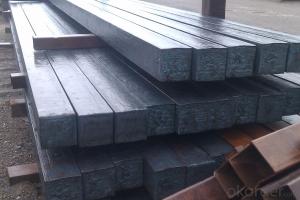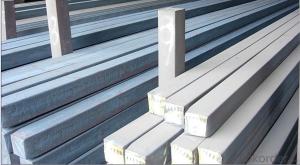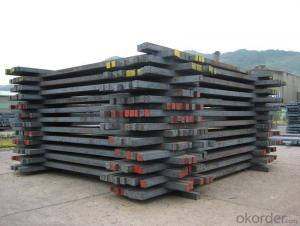Q235/3SP 125MM Blast Furnace Hot Rolled Steel Billet
- Loading Port:
- Tianjin
- Payment Terms:
- TT OR LC
- Min Order Qty:
- 2000 m.t.
- Supply Capability:
- 30000 m.t./month
OKorder Service Pledge
OKorder Financial Service
You Might Also Like
Description of Q235/3SP 125MM Blast Furnace Hot Rolled Steel Billet
Our hot dip galvanised steels consist of a steel substrate with a metallic zinc coating applied by means of a continuous hot dip galvanising process. Metallic zinc coatings are available in steel grades ranging from steel for bending and deep drawing applications, to structural steels and high yield strength steels.
A glossy surface finish obtained under specific skin-pass conditions (either non-skin-passed or skin- passed with smooth cylinders to obtain low roughness) can be provided if required at time of enquiry.
Advantage of Q235/3SP 125MM Blast Furnace Hot Rolled Steel Billet
Uncoated CR steel sheet With the features of in line with the international highest standards in demension and shape, excellent surface finish and properties, the products are mainly used in home appliance and automobile industries.
Galvanized steel sheet(include HDG and EG)
With the features of good corrosion resistance, the products are mainly used in automobile, home appliance, electronics, building and machinery manufacture industries, etc.
Precoated steel sheet With the features of enviromental protection and good processablility, long lasting surface durability, rich in colors, the products are maily used in building, home appliance and furniture industries, etc.
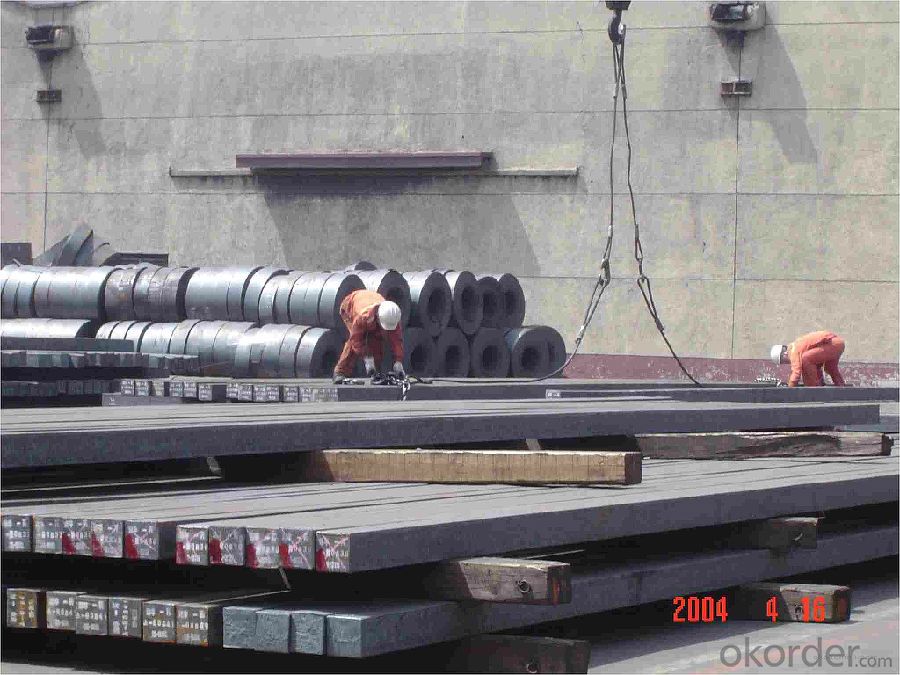
Applications of Q235/3SP 125MM Blast Furnace Hot Rolled Steel Billet
Our hot dip galvanised steels can be used in a very wide range of applications for industrial markets, both indoors and outdoors. Some of the most common applications are:
Building: wide sections for roofing and cladding, doors, door frames, metallic ceilings, partitions, structural members etc
Domestic appliances: all appliances for this sector (both white and brown goods) are manufactured with hot dip galvanised steels
Miscellaneous: electrical cabinets, aeraulic components, air conditioners, road signs etc
Zinc hot dip galvanised steel is suitable for contact with foodstuffs under certain conditions, as specified in European directive 89/109/EEC and French standard NF A 36-712-1. Please contact us for further information on this subject.
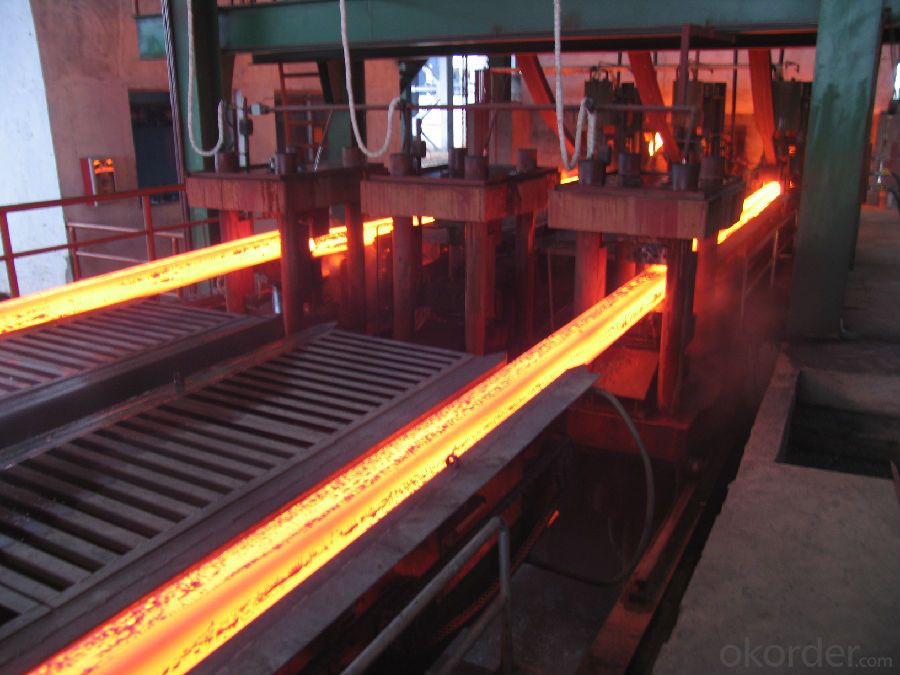
Specifications of Q235/3SP 125MM Blast Furnace Hot Rolled Steel Billet
Quality | Q/BQB 440-2003 | JIS G3312-1994 JIS G3321 | EN 10326-2004 | ASTM A653-02a |
EN 10327-2004 | (BASE PLATE) | |||
(BASE PLATE) | ||||
Commercial Steel | DC51D | SGCC SGLCC | DX51D+Z DX51D+AZ | CS Type A/B/C |
Forming Steel | St01,St02,St03 | SGCD1 SGLCD1 | FS Type A, Type B | |
Drawing | DC52D /DC53D | - | DX52D+Z DX52D+AZ | DDS TYPE A/C |
Steel | DX53D+Z DX53D+AZ | |||
Structural | S280GD (StE28) | SGC400 SGLC400 | S280D+Z DX54D+AZ | SS275 |
Steel | S350GD (StE34) | SGC440 SGLC440 | S350D+Z S350D+AZ | SS340 Class1 |
FAQ of Q235/3SP 125MM Blast Furnace Hot Rolled Steel Billet
We have organized several common questions for our clients,may help you sincerely:
1. How Can I Visit There?
Our company is located in Tianjin City, China, near Beijing. You can fly to Tianjin Airport Directly. All our clients, from home or aboard, are warmly welcome to visit us!
2. How Can I Get Some Sample?
We are honored to offer you sample.
3. Why choose CNBM?
Our delivery time about 15-20days for standard sizes, if you have other requirements like hardness, quanity and width ,it is about 20-40days. But don't worry we also try our best for the delivery time ,because time longer and our cost is higher.
- Q:What are the different surface treatment options for steel billets?
- There are several different surface treatment options available for steel billets, depending on the specific requirements and applications. Some of the common surface treatment methods for steel billets include: 1. Pickling: This process involves immersing the steel billets in an acid solution to remove any scales or impurities on the surface. Pickling helps to improve the surface finish and prepare the steel for further treatment or processing. 2. Shot blasting: Shot blasting is a mechanical process that involves propelling small steel shots at high velocity onto the surface of the billets. This treatment helps to remove rust, scales, and other contaminants, resulting in a clean and smooth surface finish. 3. Phosphating: Phosphating is a chemical treatment method that involves applying a phosphate coating onto the steel billets' surface. This process helps to improve corrosion resistance, enhance paint adhesion, and provide a uniform surface for subsequent treatments. 4. Galvanizing: Galvanizing is a popular surface treatment option where a layer of zinc is applied to the steel billets' surface through a hot-dip or electroplating process. This treatment provides excellent corrosion resistance, making it suitable for outdoor applications. 5. Coating: Steel billets can be coated with various materials, such as epoxy, polyurethane, or powder coatings, to enhance their appearance, provide additional corrosion protection, or improve resistance to wear and tear. 6. Passivation: Passivation is a chemical treatment process that aims to remove any free iron or iron oxide from the steel billets' surface and form a protective oxide layer. This treatment helps to increase corrosion resistance and improve the billets' overall performance. It is important to consider the specific requirements and intended use of the steel billets when selecting the appropriate surface treatment method. Factors such as corrosion resistance, appearance, adhesion, and wear resistance should be taken into account to ensure the desired performance and longevity of the steel billets.
- Q:The role of carbon content in steels
- Therefore, the carbon content determines the use of steel: low carbon steel (carbon content < 0.25%), commonly used as extrusion and stamping materials; carbon steel (carbon content < 0.6%), commonly used as mechanical parts; high carbon steel (carbon content > 0.7%), commonly used tools, tool and mould etc..
- Q:What are the challenges faced in steel billet manufacturing?
- Some of the challenges faced in steel billet manufacturing include achieving consistent quality, maintaining efficiency in production processes, managing energy consumption, ensuring the safety of workers, and addressing environmental concerns. Additionally, market fluctuations and competition can also pose challenges in terms of pricing and demand.
- Q:What are the different methods of steel billet surface plating?
- There are several different methods of steel billet surface plating, each with its own advantages and applications. Some of the most common methods include: 1. Electroplating: This is a widely used method where an electric current is used to deposit a layer of metal onto the surface of the steel billet. The billet is submerged in a solution containing metal ions, and when the current is applied, the metal ions are attracted to the steel surface, forming a thin coating. 2. Hot-dip galvanizing: In this method, the steel billet is dipped into a bath of molten zinc. The high temperature causes the zinc to bond with the steel, forming a protective layer. This process is commonly used for steel structures that will be exposed to harsh environments or corrosive elements. 3. Powder coating: This technique involves applying a dry powder to the surface of the steel billet, which is then heated to form a protective layer. Powder coating offers excellent durability, resistance to corrosion, and a wide range of color options. 4. Physical vapor deposition (PVD): PVD is a method where a thin film of metal is deposited onto the surface of the steel billet through a physical process such as evaporation or sputtering. This technique is commonly used for decorative purposes and to enhance the hardness and wear resistance of the steel surface. 5. Chemical conversion coating: This process involves treating the steel billet with a chemical solution that forms a protective layer on the surface. Common conversion coatings include phosphate and chromate coatings, which provide corrosion resistance and improve paint adhesion. 6. Thermal spraying: In this method, a heated material, typically a metal or ceramic powder, is sprayed onto the steel billet surface using a high-velocity gas or flame. The sprayed material forms a coating, providing enhanced protection against wear, corrosion, and high temperatures. Each of these methods has its own benefits and is suitable for different applications. The choice of plating method depends on factors such as the desired level of protection, cost, aesthetics, and specific requirements of the steel billet's end use.
- Q:How are steel billets shaped into other forms?
- Steel billets are shaped into other forms through a process called hot or cold working. In hot working, the billets are heated to high temperatures and then shaped using various methods like rolling, forging, or extrusion. Cold working involves shaping the billets at room temperature through processes such as drawing, bending, or pressing. These techniques allow the steel billets to be transformed into different shapes and sizes according to the desired end product.
- Q:How to purchase suitable billet heating furnace
- Choice can not be blind, you can not just look at the price, the choice of advice you consult more manufacturers, and then use the exclusion method to determine your final goal. Online can take a look at live video, more reference.
- Q:What are the main factors affecting the creep resistance of steel billets?
- The main factors affecting the creep resistance of steel billets include the composition of the steel, the temperature at which the billets are exposed, the applied stress, and the microstructure of the steel.
- Q:What are the different types of steel billets used in the aerospace industry?
- Various types of steel billets are utilized in the aerospace industry to meet the stringent requirements for aircraft components. Rigorous testing and quality control are undertaken on these steel billets to ensure they meet the necessary standards for aerospace applications. 1. Stainless Steel Billets: Stainless steel proves to be highly resistant to corrosion, making it an ideal choice for aircraft parts that are exposed to moisture, high temperatures, and chemicals. It possesses excellent mechanical properties, including high strength and toughness, which are essential for aerospace components. 2. Alloy Steel Billets: Alloy steel combines iron with other elements, such as nickel, chromium, and molybdenum, to enhance specific properties. These billets offer outstanding strength, hardness, and wear resistance, making them suitable for critical parts like landing gear, engine components, and structural elements. 3. Tool Steel Billets: Tool steel is renowned for its exceptional hardness, toughness, and high temperature resistance. It is commonly used in the aerospace industry for manufacturing cutting tools, dies, and molds. The ability to retain its hardness at elevated temperatures makes tool steel billets crucial for machining and shaping aerospace components. 4. Carbon Steel Billets: Due to its high strength, low cost, and ease of manufacturing, carbon steel is widely utilized in the aerospace industry. It primarily finds application in non-critical parts such as brackets, fasteners, and supports. Carbon steel billets can be further classified based on their carbon content, with higher carbon steel providing greater strength but reduced ductility. 5. Titanium Steel Billets: Titanium alloys are extensively employed in the aerospace industry due to their exceptional strength-to-weight ratio, corrosion resistance, and high-temperature performance. These billets offer excellent mechanical properties while being lightweight, making them ideal for critical components like aircraft frames, engine parts, and landing gear. It is essential to consider factors such as strength, weight, corrosion resistance, temperature resistance, and cost when selecting steel billets for aerospace components. The choice of steel billets plays a crucial role in ensuring the safety, performance, and longevity of the aircraft components.
- Q:How are steel billets used in the manufacturing of bars?
- Steel billets are an essential component in the manufacturing of bars. They serve as the starting point for the production process. Billets are typically a semi-finished product that is obtained through the continuous casting of molten steel into a solid form. These billets are then further processed to create different types of bars. Once the steel billets are obtained, they are heated to high temperatures to make them more malleable. This heating process, known as hot rolling, helps to reduce the size and shape of the billets to the desired dimensions. The billets are then fed through a series of rolling mills, which apply pressure to the material, gradually shaping it into bars. During the rolling process, the billets undergo a significant reduction in thickness and length, resulting in a longer and narrower shape. The rolling mills have a set of grooves that impart the desired shape and dimensions to the billets. As the steel passes through these grooves, it undergoes plastic deformation, causing the material to elongate and take on the shape of the bars being produced. Once the desired shape and dimensions are achieved, the bars are cut to the required lengths and cooled. This cooling process, known as quenching, helps to improve the mechanical properties of the bars, making them stronger and more durable. Furthermore, the bars may undergo additional processes such as straightening, surface treatment, or heat treatment to further enhance their properties. The bars produced from steel billets find applications in various industries, including construction, automotive, manufacturing, and infrastructure. They are used in the construction of buildings, bridges, and roads as structural components. In the automotive industry, bars are used for making axles, shafts, and various other components. Additionally, bars are utilized in the manufacturing of machinery, equipment, and tools. In conclusion, steel billets play a crucial role in the manufacturing of bars. They are transformed through the hot rolling process into the desired shape and dimensions, resulting in the production of high-quality bars that are widely used across multiple industries.
- Q:How are steel billets used in the manufacturing of bridges?
- Steel billets are crucial for bridge manufacturing as they act as the starting point for creating different structural elements. Usually rectangular or square, these billets are heated and rolled in mills to form various sections like beams, columns, and girders. After being rolled into the desired shape, the steel billets go through further processing to enhance their strength and durability. This involves heat treatment and quenching processes to improve mechanical properties such as hardness and toughness. Additionally, surface treatments are applied to protect against corrosion, ensuring the bridge's longevity. The shaped and treated steel sections derived from these billets are then assembled and welded together to create the bridge's framework. These structural elements provide the necessary load-bearing capacity and stability to support the bridge's weight, as well as withstand external forces like traffic loads, wind, and seismic activity. Moreover, steel billets are vital for constructing bridge piers and abutments, which offer support and anchorage. These components are often reinforced with steel bars or rebar, produced from billets, to increase their strength and ability to withstand vertical and horizontal forces. In conclusion, steel billets are essential raw materials for manufacturing bridges. Through rolling, shaping, heat treatment, and surface treatment processes, these billets are transformed into beams, columns, and other sections that form the bridge's framework. The resulting steel components provide the necessary strength, durability, and load-bearing capacity for the construction of safe and reliable bridges.
1. Manufacturer Overview |
|
|---|---|
| Location | |
| Year Established | |
| Annual Output Value | |
| Main Markets | |
| Company Certifications | |
2. Manufacturer Certificates |
|
|---|---|
| a) Certification Name | |
| Range | |
| Reference | |
| Validity Period | |
3. Manufacturer Capability |
|
|---|---|
| a)Trade Capacity | |
| Nearest Port | |
| Export Percentage | |
| No.of Employees in Trade Department | |
| Language Spoken: | |
| b)Factory Information | |
| Factory Size: | |
| No. of Production Lines | |
| Contract Manufacturing | |
| Product Price Range | |
Send your message to us
Q235/3SP 125MM Blast Furnace Hot Rolled Steel Billet
- Loading Port:
- Tianjin
- Payment Terms:
- TT OR LC
- Min Order Qty:
- 2000 m.t.
- Supply Capability:
- 30000 m.t./month
OKorder Service Pledge
OKorder Financial Service
Similar products
New products
Hot products
Related keywords
